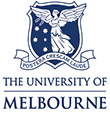Integrating photodynamic disinfection during water filtration for bacteria and viruses management with zinc phthalocyanine-embedded bacterial cellulose membranes
Authors:
- Bushnaq, Hooralain
- Mir, Ishfaq Showket
- Balakrishnan, Harikrishnan
- Burton, Tom
- Montoya, Julio Carrera
- Rodriguez-Andres, Julio
- Mackenzie, Jason
- Palmisano, Giovanni
- Mcelhinney, James
- Mettu, Srinivas
- Messaddeq, Younes
- Dumée, Ludovic F.
Details:
Journal of Membrane Science, Volume 738, 2026-01-31
Article Link: Click here
Biofouling remains a major obstacle to membrane longevity and efficiency in water treatment, driving the need for membranes with intrinsic antimicrobial properties. This study demonstrates a novel, one-step biosynthesis approach for fabricating Zinc Phthalocyanine (ZnPc)- functionalized Bacterial Cellulose (BC) composite membranes by incorporating ZnPc directly into the Komagataeibacter hansenii (K. hansenii) growth medium. Despite the known antimicrobial activity of ZnPc under irradiation, its presence in the culture medium in dark conditions did not compromise bacterial viability or cellulose production, enabling the successful in situ formation of a mixed matrix membrane during fermentation. Structural characterization confirmed that ZnPc incorporation did not alter the nanofibrous architecture of BC. The composite membranes exhibited visible-light-activated photodynamic activity, enhancing both photocatalytic and antimicrobial performance, with photodegradation experiments under static conditions demonstrating efficient photodynamic degradation of methylene blue and underscoring the broad potential of ZnPc–BC composite membranes for concurrent microbial inactivation and organic pollutant removal. Filtration experiments confirmed the bacterial rejection and the biofouling resistance of the ZnPc-BC composite membranes, with the 3 wt% ZnPc-BC composite membrane achieving 99.8 ± 0.20 % E. coli rejection and 98.8 ± 0.9 % permeance recovery under irradiation. However, antiviral activity was minimal, due to electrostatic repulsion at neutral pH, which limited viral adsorption and reduced photodynamic inactivation efficiency. Collectively, this bio-integrated fabrication strategy offers a sustainable and scalable route for producing multifunctional membranes that combine the advantages of bio-derived nanofibrous scaffolds with light-activated antimicrobic properties. The effective incorporation of ZnPc into the BC membrane matrix during biosynthesis opens new opportunities for green fabrication of advanced filtration materials for water treatment and biomedical applications.


